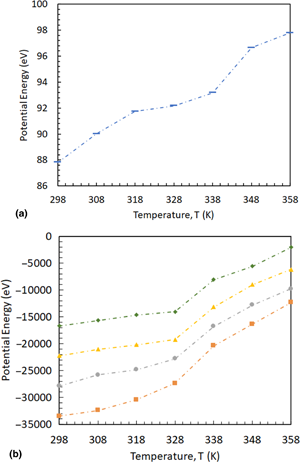Crossref Citations
This article has been cited by the following publications. This list is generated based on data provided by
Crossref.
Almahmoud, Khaled
Mahadevan, Thiruvillamalai
Du, Jincheng
Bostanci, Huseyin
and
Zhao, Weihuan
2020.
Investigation of thermal transport properties of copper-supported pillared-graphene structure using molecular dynamics simulations.
MRS Communications,
Vol. 10,
Issue. 4,
p.
695.
2020.
Kant, K.
Biwole, P.H.
Shamseddine, I.
Tlaiji, G.
Pennec, F.
and
Fardoun, F.
2021.
Recent advances in thermophysical properties enhancement of phase change materials for thermal energy storage.
Solar Energy Materials and Solar Cells,
Vol. 231,
Issue. ,
p.
111309.
Wu, Shuying
Jiang, Wei
Ma, Xinyao
and
Peng, Deqi
2021.
Molecular dynamics simulations of lauric acid confined in carbon nanotube with high thermal conductivity.
Phase Transitions,
Vol. 94,
Issue. 6-8,
p.
436.
Dethan, Jacob F.N.
and
Swamy, Varghese
2022.
Mechanical and thermal properties of carbon nanotubes and boron nitride nanotubes for fuel cells and hydrogen storage applications: A comparative review of molecular dynamics studies.
International Journal of Hydrogen Energy,
Vol. 47,
Issue. 59,
p.
24916.
Mahadevan, Thiruvilla
and
Du, Jincheng
2022.
Atomistic Simulations of Glasses.
p.
186.
Atinafu, Dimberu G.
Yun, Beom Yeol
Kwon, Eilhann E.
Chang, Seong Jin
and
Kim, Sumin
2023.
Unveiling the effect of molecular chain length on the thermal energy storage capacity and transition temperature of alkane-based phase change composites.
Chemical Engineering Journal,
Vol. 462,
Issue. ,
p.
142303.
Wong, Tan Lo
Vallés, Cristina
Nasser, Adel
and
Abeykoon, Chamil
2023.
Effects of boron-nitride-based nanomaterials on the thermal properties of composite organic phase change materials: A state-of-the-art review.
Renewable and Sustainable Energy Reviews,
Vol. 187,
Issue. ,
p.
113730.
Wang, Hao
He, Lihong
and
Hou, Yitong
2024.
Analysis of thermophysical properties of polyethylene glycol/SiO2/graphene shape-stabilized phase change materials through experimental research and molecular dynamics simulation.
Materials Today Communications,
Vol. 41,
Issue. ,
p.
110870.
Kong, Xiangfei
Nie, Ruiming
and
Yuan, Jianjuan
2024.
ZIF-derived carbon/BN/CMF composite PCM for enhanced latent thermal storage, photothermal conversion, and thermal insulation.
Solar Energy Materials and Solar Cells,
Vol. 278,
Issue. ,
p.
113167.
Ravula, Sai Charan
and
Chilukoti, Hari Krishna
2025.
Molecular dynamics study of structure and mass transport at liquid
n
-Eicosane/hBN interfaces
.
Molecular Simulation,
Vol. 51,
Issue. 9,
p.
600.
Feng, Yuhao
Chen, Keke
Liu, Panpan
Zhao, Jindi
Li, Yang
and
Chen, Xiao
2025.
Longitudinal confinement engineering in phase change materials.
eScience,
p.
100454.



